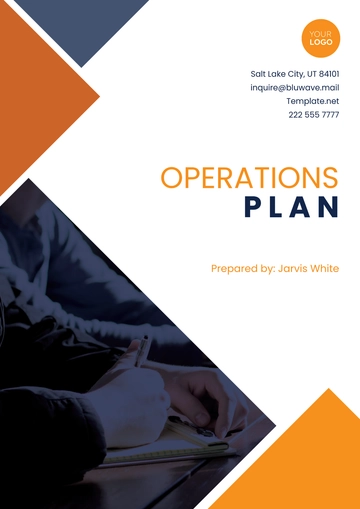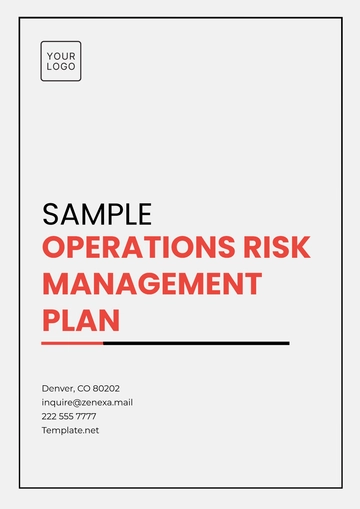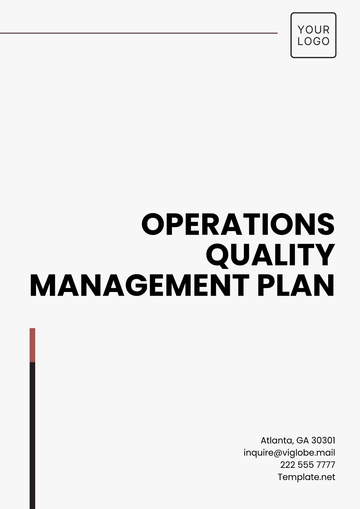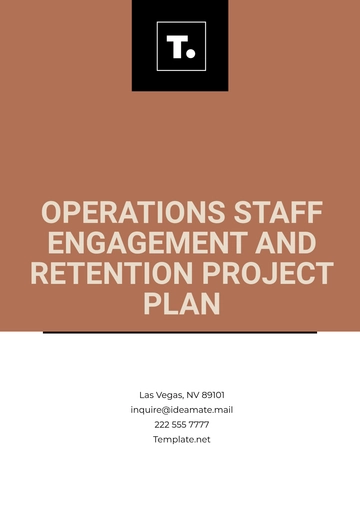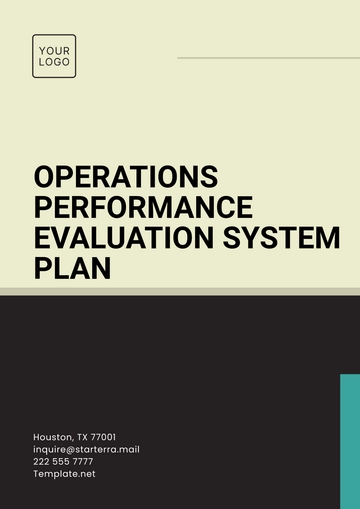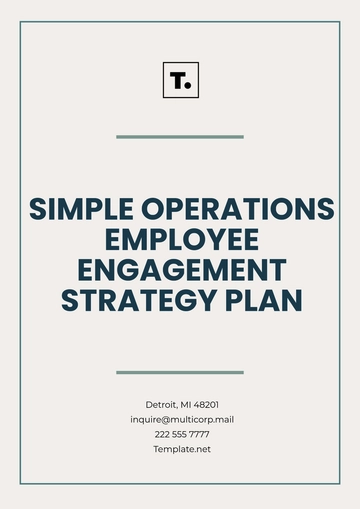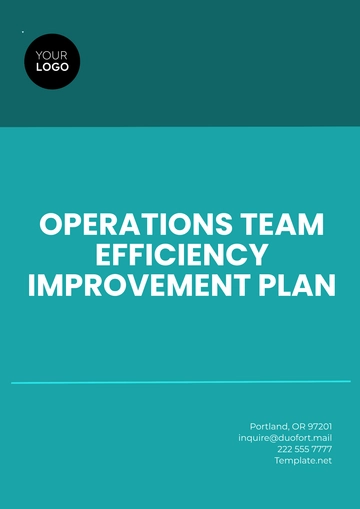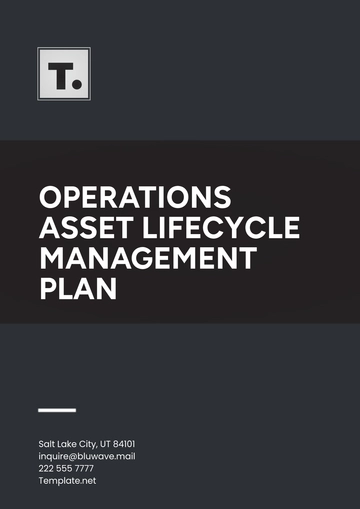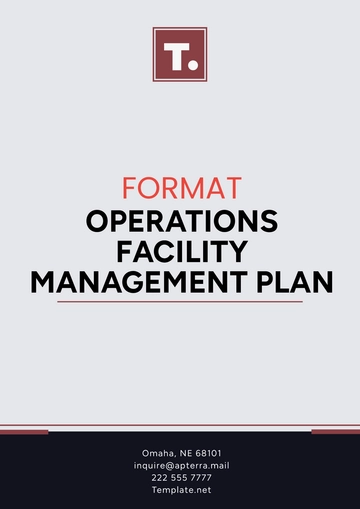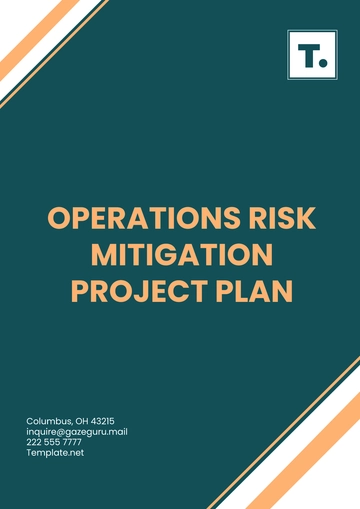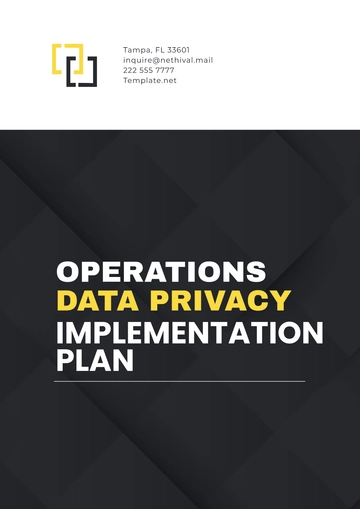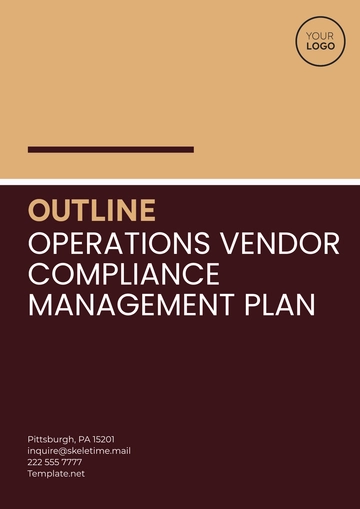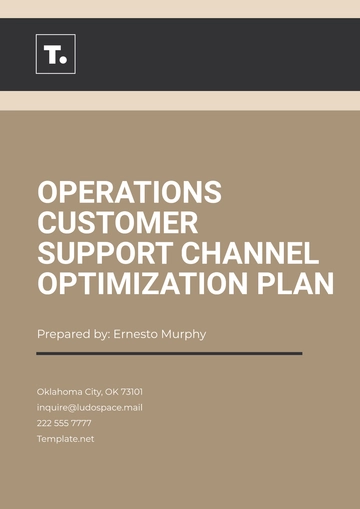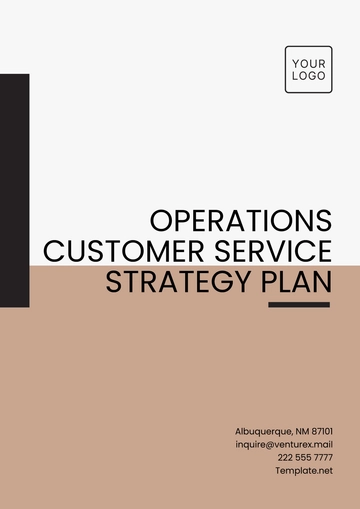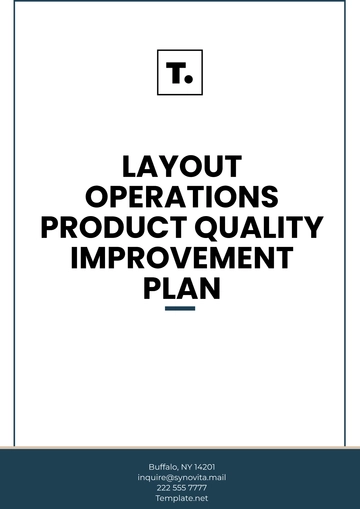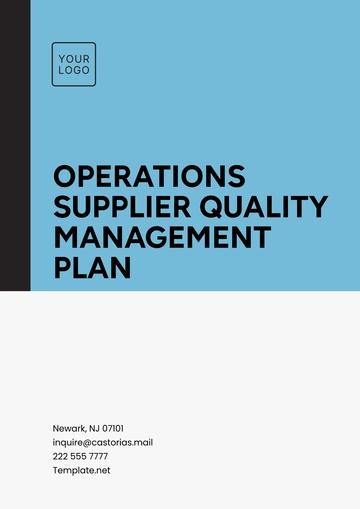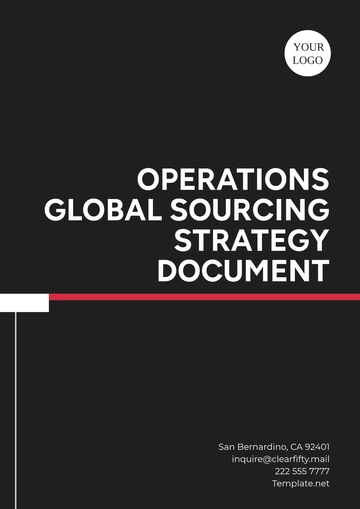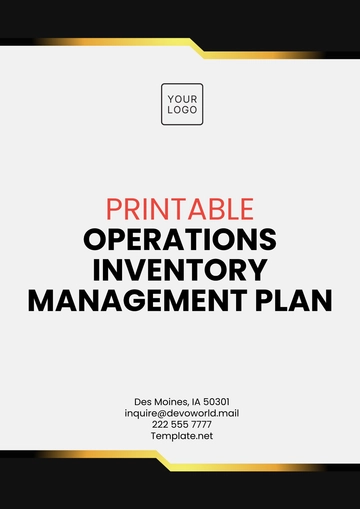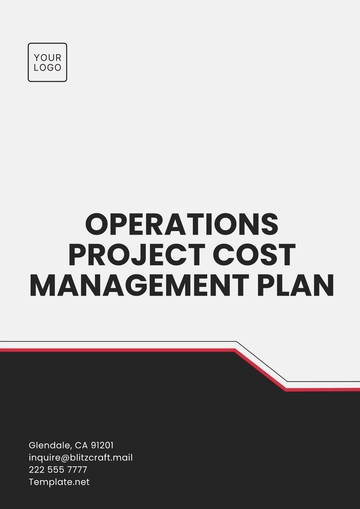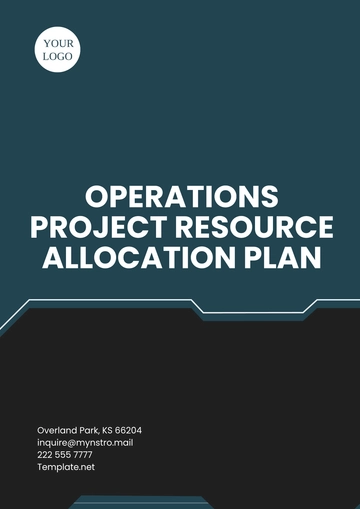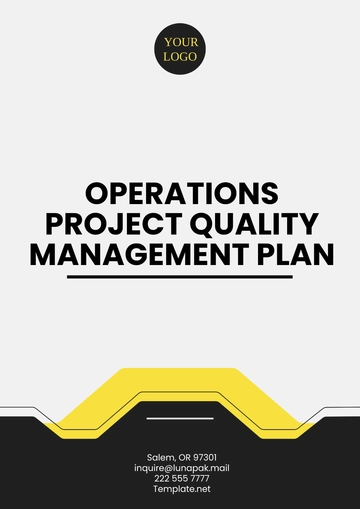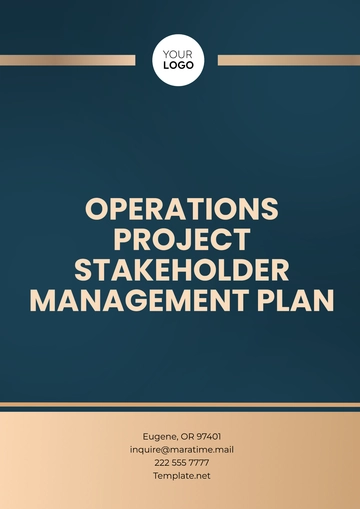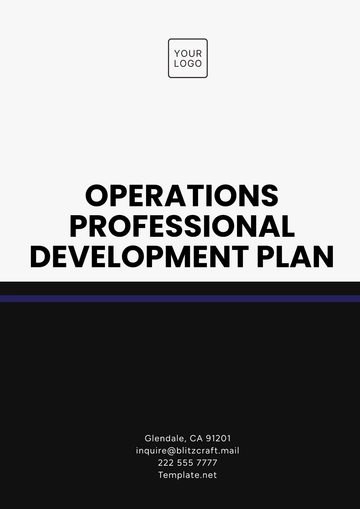Free Team Operational Plan
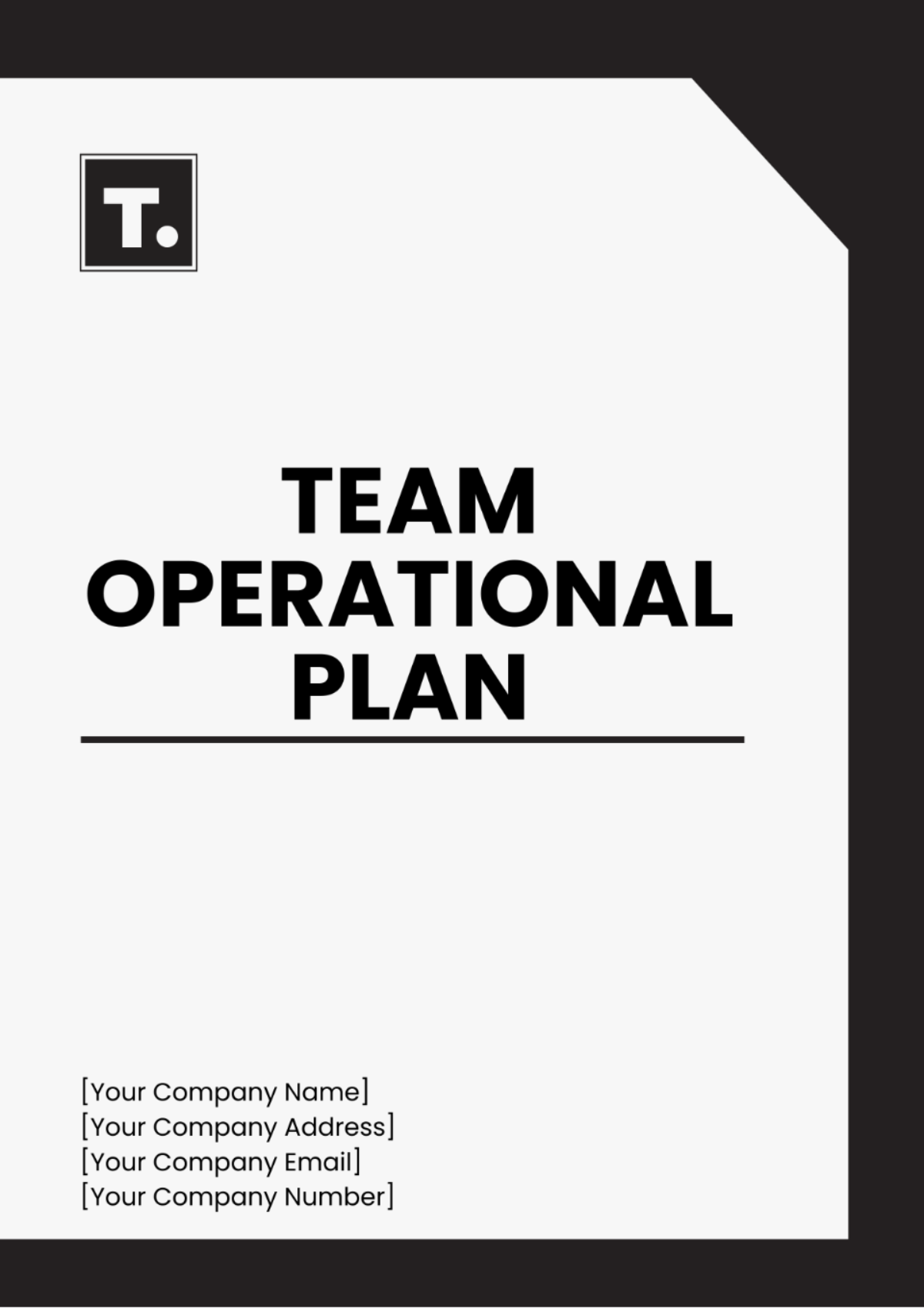
Prepared by | [Your Name] |
Date | [DATE] |
I. Executive Summary
The Team Operational Plan outlines the strategies, goals, and actions required to ensure efficient team performance and achievement of organizational objectives. This plan encompasses various aspects including team structure, communication protocols, resource allocation, roles and responsibilities, performance metrics, monitoring and review, and risk management.
II. Team Overview
Team Name: [Your Company Name] Project Team
Team Leader: [Your Name]
Team Members:
Jane Smith - Project Manager
Alex Johnson - Software Developer
Emily Brown - Quality Assurance Analyst
Michael Lee - UX/UI Designer
Sarah Wilson - Marketing Specialist
III. Objectives
Goal 1: Develop and launch a new software product by 2055.
Goal 2: Achieve a customer satisfaction rating of 90% by 2056.
Goal 3: Increase market share by 15% within the next five years.
IV. Strategies
Strategy 1: Conduct market research to identify customer needs and preferences.
Strategy 2: Implement Agile project management methodologies to streamline development processes.
Strategy 3: Invest in continuous training and development for team members to enhance skills and expertise.
V. Action Plan
A. Task 1: Conduct Market Research
Objective: Identify customer needs and preferences.
Responsible: Sarah Wilson
Deadline: 2051.
B. Task 2: Develop Software Prototype
Objective: Create a functional prototype of the software.
Responsible: Alex Johnson
Deadline: 2052.
C.Task 3: Conduct User Testing
Objective: Gather feedback from users to refine the product.
Responsible: Emily Brown
Deadline: 2053.
VI. Communication Plan
Channels: Email, Slack, Weekly Team Meetings.
Frequency: Weekly team meetings, and daily updates via Slack.
Protocols: Clear and concise communication, and prompt responses to emails and messages.
VII. Resource Allocation
Financial Resources: $500,000 allocated for development and marketing.
Human Resources: Team members are assigned based on expertise and availability.
Material Resources: Software development tools, testing equipment, and marketing materials.
VIII. Roles and Responsibilities
Team Member | Position | Responsibilities |
|---|---|---|
[Your Name] | Team Leader |
|
Jane Smith | Project Manager |
|
Alex Johnson | Software Developer |
|
Emily Brown | Quality Assurance |
|
Michael Lee | UX/UI Designer |
|
Sarah Wilson | Marketing Specialist |
|
IX. Performance Metrics
Key Performance Indicators (KPIs):
Customer satisfaction rating.
Time-to-market for software releases.
Market share growth.
Evaluation Frequency: Quarterly performance reviews.
Performance Review Process: Peer feedback, supervisor evaluations, and KPI assessments.
X. Monitoring and Review
Monitoring Process: Weekly progress reports, regular team meetings, and milestone tracking.
Review Frequency: Monthly project reviews and quarterly performance evaluations.
Review Criteria: Achievement of project milestones, adherence to timelines and budgets, and performance against KPIs.
Feedback Mechanism: Open communication channels for team members to provide feedback and suggestions.
XI. Risk Management
Identification: Regular risk assessments and analysis of potential threats.
Assessment: Evaluation of the impact and likelihood of risks on project success.
Mitigation: Implementation of contingency plans, proactive risk mitigation strategies, and regular monitoring of risk factors.
XII. Conclusion
The Team Operational Plan provides a comprehensive framework for effective team management and performance. By clearly defining roles and responsibilities, establishing performance metrics, implementing monitoring and review mechanisms, and proactively managing risks, we aim to achieve our objectives and contribute to the success of the organization.
- 100% Customizable, free editor
- Access 1 Million+ Templates, photo’s & graphics
- Download or share as a template
- Click and replace photos, graphics, text, backgrounds
- Resize, crop, AI write & more
- Access advanced editor
Introducing the Team Operational Plan Template from Template.net, your ultimate solution for streamlined team collaboration. This editable and customizable template empowers you to chart your course with precision. Crafted for seamless integration into your workflow, it's editable in our Ai Editor Tool, ensuring effortless customization. Elevate your team's performance today with this indispensable planning resource.
You may also like
- Finance Plan
- Construction Plan
- Sales Plan
- Development Plan
- Career Plan
- Budget Plan
- HR Plan
- Education Plan
- Transition Plan
- Work Plan
- Training Plan
- Communication Plan
- Operation Plan
- Health And Safety Plan
- Strategy Plan
- Professional Development Plan
- Advertising Plan
- Risk Management Plan
- Restaurant Plan
- School Plan
- Nursing Home Patient Care Plan
- Nursing Care Plan
- Plan Event
- Startup Plan
- Social Media Plan
- Staffing Plan
- Annual Plan
- Content Plan
- Payment Plan
- Implementation Plan
- Hotel Plan
- Workout Plan
- Accounting Plan
- Campaign Plan
- Essay Plan
- 30 60 90 Day Plan
- Research Plan
- Recruitment Plan
- 90 Day Plan
- Quarterly Plan
- Emergency Plan
- 5 Year Plan
- Gym Plan
- Personal Plan
- IT and Software Plan
- Treatment Plan
- Real Estate Plan
- Law Firm Plan
- Healthcare Plan
- Improvement Plan
- Media Plan
- 5 Year Business Plan
- Learning Plan
- Marketing Campaign Plan
- Travel Agency Plan
- Cleaning Services Plan
- Interior Design Plan
- Performance Plan
- PR Plan
- Birth Plan
- Life Plan
- SEO Plan
- Disaster Recovery Plan
- Continuity Plan
- Launch Plan
- Legal Plan
- Behavior Plan
- Performance Improvement Plan
- Salon Plan
- Security Plan
- Security Management Plan
- Employee Development Plan
- Quality Plan
- Service Improvement Plan
- Growth Plan
- Incident Response Plan
- Basketball Plan
- Emergency Action Plan
- Product Launch Plan
- Spa Plan
- Employee Training Plan
- Data Analysis Plan
- Employee Action Plan
- Territory Plan
- Audit Plan
- Classroom Plan
- Activity Plan
- Parenting Plan
- Care Plan
- Project Execution Plan
- Exercise Plan
- Internship Plan
- Software Development Plan
- Continuous Improvement Plan
- Leave Plan
- 90 Day Sales Plan
- Advertising Agency Plan
- Employee Transition Plan
- Smart Action Plan
- Workplace Safety Plan
- Behavior Change Plan
- Contingency Plan
- Continuity of Operations Plan
- Health Plan
- Quality Control Plan
- Self Plan
- Sports Development Plan
- Change Management Plan
- Ecommerce Plan
- Personal Financial Plan
- Process Improvement Plan
- 30-60-90 Day Sales Plan
- Crisis Management Plan
- Engagement Plan
- Execution Plan
- Pandemic Plan
- Quality Assurance Plan
- Service Continuity Plan
- Agile Project Plan
- Fundraising Plan
- Job Transition Plan
- Asset Maintenance Plan
- Maintenance Plan
- Software Test Plan
- Staff Training and Development Plan
- 3 Year Plan
- Brand Activation Plan
- Release Plan
- Resource Plan
- Risk Mitigation Plan
- Teacher Plan
- 30 60 90 Day Plan for New Manager
- Food Safety Plan
- Food Truck Plan
- Hiring Plan
- Quality Management Plan
- Wellness Plan
- Behavior Intervention Plan
- Bonus Plan
- Investment Plan
- Maternity Leave Plan
- Pandemic Response Plan
- Succession Planning
- Coaching Plan
- Configuration Management Plan
- Remote Work Plan
- Self Care Plan
- Teaching Plan
- 100-Day Plan
- HACCP Plan
- Student Plan
- Sustainability Plan
- 30 60 90 Day Plan for Interview
- Access Plan
- Site Specific Safety Plan
